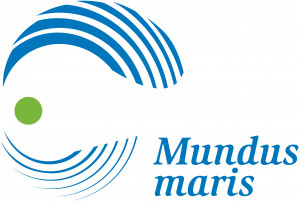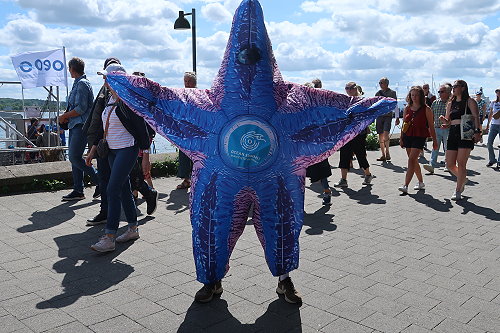
Civil society activities for ocean literacy, regeneration and protection were part and parcel of the festive days preceding the start of the Ocean Race Europe in Kiel, Germany, on 10 August 2025. Our friends of the Ocean Summit in collaboration with Kiel Marketing had provided the logistics for Mundus maris and others to offer lots of activities and information to the public that streamed along the Kiellinie to be part of the event. It was also an opportunity to celebrate World Ocean Day 2025 with a little delay true to this year’s UN motto ‚WONDER: sustaining what sustains us‘.
There was plenty of wonders to discover on the long stretch of walking spaces next to the water line starting with the GEOMAR aquarium with native fauna, including the seals racing for fish food in the outside basin to the experiments about sea grass rehabilitation and sea level rise.
Food, drink, music and fan articles were abundant in the section focused on the Ocean Race itself, with Team Malizia of Boris Herrmann the local hero.
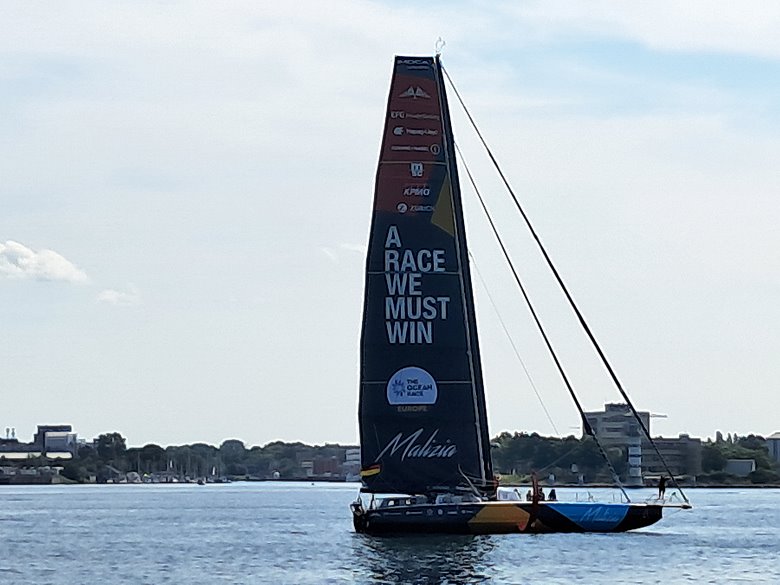
Mundus maris shared a pagoda tent space with the association Youth Sailing (Jugendsegeln), excellent company to combine ocean literacy with hands on training on board a traditional sail boat.
Our offer to build a marine food web and reflect on who eats whom gave rise to lots of discussions. Like on land, plants are the only producers in the food web. They are defined as trophic level 1. Small and large marine algae and other plant life transform the energy of the sunlight in the upper meters of the water column into organic matter. Almost all other life in the sea, notably all animals, depend on this primary production. The marine animals feeding on these plants, mostly small zooplankton, are them consumers on trophic level 2. In turn, they are eaten by small fish like sprat, anchovies, sardines or herring, corresponding to the next trophic level. Big fish like tunas, sword fish, salmon and others feeding on small fish would then correspond to trophic level 4.
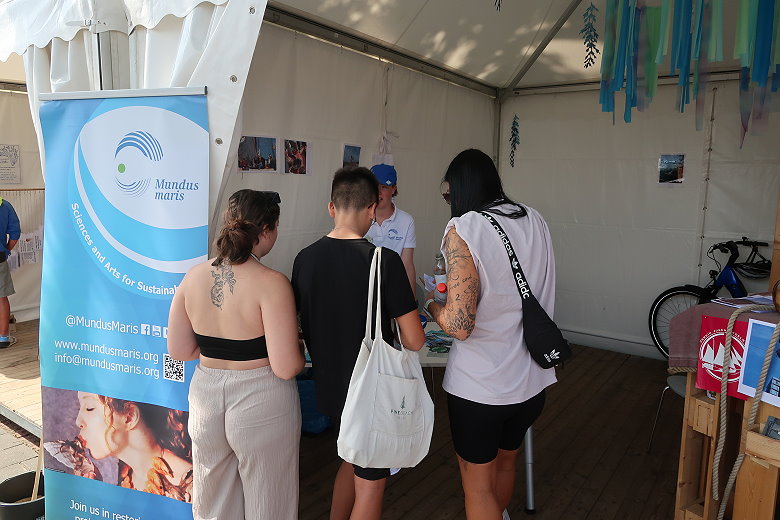
Visitors composing a marine food web at the Mundus maris booth
Few people were aware of the high energy demands of marine animals that must breathe in the much denser water medium than air-breathing animals, including people. These conditions result in only about 10% of the energy or biomass of one trophic level transferred to the next.
That also means that the very biggest animals in the ocean are feeding on a lower trophic level where more food is available for them. This is the case e.g. of the biggest fish, the whale shark (Rhincodon typus), which can attain almost 20 m in length and weigh up to 34 tons. Likewise the biggest animal on the planet, the Blue Whale (Balaenoptera musculus), a mammal, which can attain 160 tons, feeds on small fish, squid, and other smaller animals which are more abundant than big fish. Consequently, top predators like the Orca (Orcinus orca), exist in limited numbers.
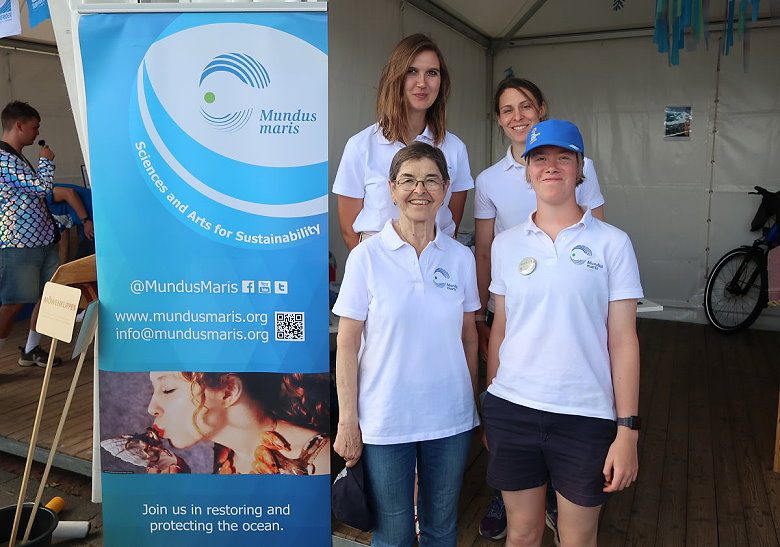
The Mundus maris team at the Ocean race event in Kiel
It also means that it is not very clever to fatten predators like salmon or other carnivorous fish in cages as they normally feed relatively high in the food web. That is even disregarding other aspects of factory farming of animals. When caught in the wild and when removing only as much fish as can grow back per year, nature provides that almost free of charge. On land, most animals used for food, like cows, goats and sheep, feed on trophic level 2. The equivalent in aquaculture would be carps, tilapias and others. As a general rule of thumb, it thus makes a lot of sense to farm low in the food web and fish high in the food web, especially after regenerating marine food webs by stopping excessive fishing and giving some space back to nature.
If this is heady stuff for some, Mundus maris also offered the Ocean Game again. In the shade of a beautiful tree protecting players from the intense sunshine, mostly families with their children were attracted to play and garner a reward for answering all questions and getting successfully through the parcours.
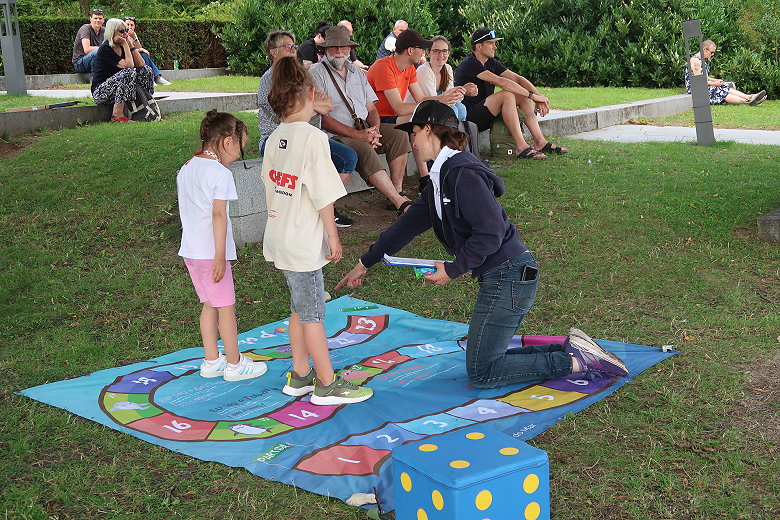
Gianna Persichini did a sterling job in moderating the game and find, like last year, that sometimes the youngsters knew more than the adults.
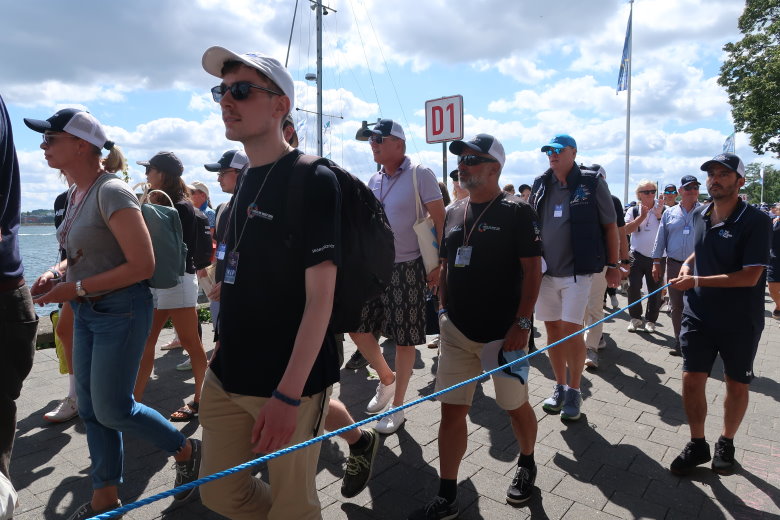
Sailors‘ Parade just before the start of the race
The Sailors‘ Parade of the racing teams on Sunday passed our booth as well. Under the cheers of the public along the way, they marched to the pier to give the last interviews and set sail for the race. The spectator fleet corralled the racing boats as they positioned themselves towards the departure line. See the early minutes of leg 1 of the race to the next stop Plymouth on YouTube, including the striking collision between the boats of Team Holcim-PRB and Allgrande MAPEI Racing.
Whether on the water or in the many interesting discussions and other activities on land, the eventful participation in the Ocean Race Europe start was worth the effort and is already triggering some useful follow-up, particularly for spreading ocean literacy and protection.
